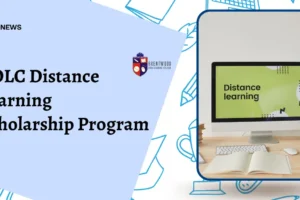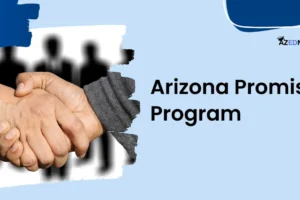Are you seeking Grants for schooling from the government? These grants can be beneficial for students, minority groups, individuals with disabilities, teachers, researchers, educational institutions, and organizations.
Table of Contents
Students with poor financial backgrounds require financial aid and support to carry out their higher education. In the USA, numerous students are unable to pay their educational expenses due to low income. For such students there are multiple types of financial support available, these include student loans, scholarships, grants, and many more. The grants are considered the best among them all because of their non-repayment specifications.
Once you have taken the loan from banks or other lenders you need to pay the interest rates and well as the amount borrowers as per the repayment deadlines. Whereas on the other hand grants are one-way funds that are given to the needy. These funds can be used to cover both the major and minor educational expenses. These include tuition fees, housing, food, books, and many more.
There are various organizations and institutions offering education grants to the needy, including the federal or state government, private institutions, foundations, charities, etc. Government grants are typically considered more reliable than private grants. In addition to financial aid, governments often provide additional support to students, such as access to resources like Free Internet For Students through government programs, ensuring a comprehensive assistance system for educational pursuits.
If you are looking for the best grants for schooling from the government then you are at the right place. We have researched and mentioned some top federal grants below:
List of the Top Grants for Schooling from the Government
1. Federal Pell Grant:
The federal Pell Grant stands out as a significant source of educational coverage grants for schooling from the government. It’s renowned as the largest provider of such assistance, offering substantial support to students pursuing their educational endeavors.
These grants provide some major educational expenses and financial support for undergraduate students who have demonstrated their financial need.
These grants are usually integrated with a comprehensive federal financial aid package which is offered with Federal Direct Loans. For the eligibility requirements, the students need to meet the FAFSA criteria. Here are some requirements that need to be satisfied to get the rewards.
- 1. The students need to depict the Financial need exceeding the Family Contribution in education.
- 2. The Enrollment status in the course whether it is a full-time or part-time program.
- 3. The cost of attending the educational institution with supporting documents.
- 4. The applicant must have a year of enrollment as a student.
The calculation of Pell Grant awards involves a consideration and assessment of these above-mentioned factors. The financial support offered under the Pell Grant is based on available funding. On average, the eligible undergraduates are currently able to receive up to $5,500 per academic year.
Grant Amount:
In the 2023-24 academic year, the Pell Grant has the potential to offer financial support of around $7,395. The specific amount granted is determined by factors such as financial need, the cost of attendance, and the student’s enrollment status.
Eligibility:
As some eligibility requirements needed to be satisfied. The applicant must be pursuing undergraduate programs and demonstrate significant financial need and for the students who have not completed a bachelor’s or graduate degree the rewards are available. Additionally, students enrolled in post-baccalaureate teacher certification programs are also qualified for financial aid.
There are some special cases where the students who have lost their parents in Iraq or Afghanistan after 9/11 are eligible for higher Pell Grant funding. The best part of the grant is that there is no requirement for repayment of the Pell Grant funds. This provides financial assistance without the burden of reimbursement.
2. Federal Supplemental Educational Opportunity Grant (FSEOG):
This campus-based aid program stands as an exceptional form of supplementary assistance among government grants for schooling. It’s a crucial resource for students facing significant financial challenges, prioritizing those with an Expected Family Contribution (EFC) of zero for the reward.
The financial aid under the grant is distributed to deserving recipients until the allocated funding is fully exhausted. The available amount of funds will determine the overall worth of the grant.
For those pursuing FSEOG, it is highly recommended to apply early and make sure to submit the FAFSA before the deadline as specified on the official website. The FSEOG allowance considers various factors such as the current Pell Grant award, auxiliary scholarships and grants, tuition costs, and university financial aid. The Awards under the grant can range from several hundred dollars to a maximum of $4,000 annually, with new awards typically averaging around $1,000.
Grant Amount:
Under the government grant for schooling, an additional grant that varies from a minimum of around $100 and a maximum of around $4,000 annually is offered. The amount is also depending on the availability of each school for the grant.
Eligibility:
The rewards are Accessible to undergraduate students who have depicted a significant financial need along with preference given to those who are recipients of the Pell Grant. Similar to other grants there is no obligation for repayment.
3. Academic Competitiveness Grants (ACG)
The main motive of the government grants is to play a pivotal role in encouraging and rewarding low-income first and second-year college students who have good high school academic standards and GPA scores. These grants operate as a combination of need and merit-based programs where the students have to compete with each other to win the rewards.
The program requires applicants to be Pell Grant recipients and must be enrolled full-time in two- or four-year programs. Also, the students who can maintain a 3.0 GPA are eligible for the program.
The main motive of the grant is to promote excellence in STEM subjects and improve the conditions of general education among students. That is why the ACGs always prefer the students who undertake challenging high school coursework.
The maximum grants for Academic Competitive Grants are around $750 for first-year students and around $1,300 for second-year students.
4. National Science and Mathematics Access to Retain Talent (SMART) Grant
The grant plays a significant role in providing financial support for low-income third and fourth-year college students who are enrolled in any USA-based renowned college or university. However, like other grants and scholarships, there are some eligibility requirements.
The Eligibility criteria include being Pell Grant recipients, demonstrating academic talent, and majoring in STEM fields or high-need foreign languages. Under the SMART Grant, the reward offered will be around $4,000 for the qualified students.
As program details and maximum grant awards may be changed every academic year due to some factors, it is highly recommended to stay informed and updated by regularly consulting the U.S. Department of Education. The applicants can also check the official website to know the latest specs of the program.
5. TE Data Grants
The government grant, a part of grants for schooling from the government, offers financial assistance to prospective teachers and other eligible individuals. This fund specifically covers tuition expenses for those committed to teaching in high-need areas for four years after graduation.
The Participants have the opportunity to earn an annual amount of up to $4,000 to assist with their educational costs and other expenses. Under the government grant the amount of around $4,000 annually is offered to the students. The amount may vary according to the financial needs of the applicants.
There are some needs and requirements that need to be met by the applicants. The rewards are only open for individuals who have aspirations of pursuing teaching careers at courses like the undergraduate, post-baccalaureate, and graduate levels.
A mandatory commitment to four years of qualifying teaching service is required for the applicants to achieve this reward. When it comes to the repayment, there is no mandatory repayment. However, if the obligation to fulfill the teaching service is not met by the recipient the grant is converted into a Direct unsubsidized loan and the repayment has to be done with interest.
6. Nursing Scholarships
The nursing scholarships, a part of the Grants for schooling from the government, provide financial support to students. These students commit to two years of service at healthcare facilities facing critical shortages. In exchange for this commitment, the government waives tuition and approved expenses.
The applicants who are eligible for the grants will receive monthly stipends which are equivalent to their college costs. Funding is available for nursing students across all levels. Those who are pursuing a master’s degree will receive half of the available resources. The Priority for financial support is given to the most disadvantaged students. Most importantly, if service obligations are not fulfilled, grants convert into loans that require repayment with interest.
7. Iraq and Afghanistan Service Grants
Under the grant, the rewards are awarded to students whose parents made the ultimate sacrifice in U.S. military service. The program is one of the longest-standing government-sponsored education programs in the US. Soldiers can also get financial aid in return for military service. They receive reimbursement for their college education and related costs like traveling and housing.
The value of these military service grants varies annually. The applicants whose parents or guardians sacrificed their lives in military service in Iraq or Afghanistan after the 9/11 terrorist attacks are highly preferred for financial support. There are some other Eligibility requirements including the students must not get the Pell grants, and there is a restriction on receiving the grant for a maximum of 12 semesters only.
The applicant must be younger than 24 years old or must be enrolled in a part-time course at a college when the parent or guardian passed away in service. There are no repayments associated with the program.
FAQs
1. How are scholarships and grants different from each other?
Both the scholarships and grants are different from each other. The grants are provided based on financial need, whereas scholarships are merit-based and provided to the students for academic achievements, extracurricular involvement, chosen field of study, and other criteria.
The grants are given one way meaning the students have no need to repay them whereas the scholarship can be in the form of a student loan and needs to be repaid by the students.
2. Is a grant equivalent to a loan?
The prime difference between a grant and a loan is the repayment. Loans require borrowers to reimburse the borrowed funds. Whereas on the other hand, the grants are given permanently and there is no need to repay them.
Grants are essentially gifts that are given for financial needs and are non-repayable to the government. However, some grants are subject to repayment as a loan only if the recipient is unable to meet some conditions.
3. What is the initial step in the grant application process?
Organizations and individuals who want to apply for a grant should first choose the specific type of grant they are interested in and then investigate the associated needs and requirements. A variety of resources are there to do so, including books, websites, and grant-writing workshops.
Also, it is highly recommended for the applicants to check whether they are eligible for the grant or not before applying because grants come with some struct eligibility requirements and cafeterias.
4. What is the federal Pell grant amount for 2023-2024?
The maximum Federal Pell Grant which is designated for the academic year 2023–24 will offer financial aid of around $7,395. The precise amount an individual student may receive is subject to various factors. Like the availability of funds, the US economic condition, and many more.
The applicant can apply and get the rewards between July 1, 2023, through June 30, 2024. The amount will be released based on the financial needs of the applicants.
Conclusion
Federal or government grants, a significant component of Grants for schooling from the government, surpass financial aid from private institutions, companies, corporations, or organizations. They offer greater reliability and require no repayment.
Students seeking government grants for schooling must meet specific eligibility requirements, such as demonstrating financial need, maintaining good academic scores, and having a low income, among others. Additionally, certain grants are specifically targeted toward students of particular ethnicities or races.
So before applying make sure whether you are eligible for them or not. We have mentioned some of the top grants for schooling from the government. You can go for any of them and the Pell Grant is highly recommended due to the number of aids offered.












Add Comment